Like his mentor Frank Lloyd Wright, Fay Jones received the American Institute of Architects (AIA) Gold Medal for his exquisite body of work, which includes his masterpiece, Thorncrown Chapel. Jones designed and built private homes and sacred spaces almost exclusively, always based on the tenets of organic architecture. Here are five of the most compelling.
Fay and Gus Jones House, Fayetteville, 1956
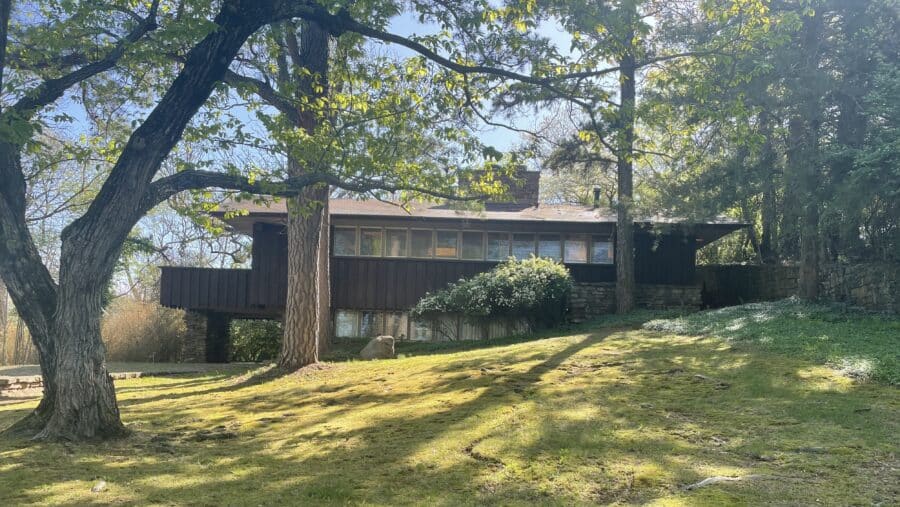
“There’s more architecture per square foot than any house I can think of,” said Greg Herman, associate professor, Fay Jones School of Architecture, University of Arkansas. “He takes this footprint, which is really just a rectangle, and changes the way you understand it with layers and elements moving around and shifting so that, in the end, you get a rich environment.”
Jones explored his architectural philosophies in his family home, the first of more than 200 residences he designed. One of the driving principles of organic architecture is fidelity to nature, and that became necessity as much as choice here. While excavating for the home, the builders uncovered a rock ledge and hidden spring. In keeping with Wright’s insistence that organic architecture should arise as a natural solution to the problem presented, Jones integrated the boulder into the living space.
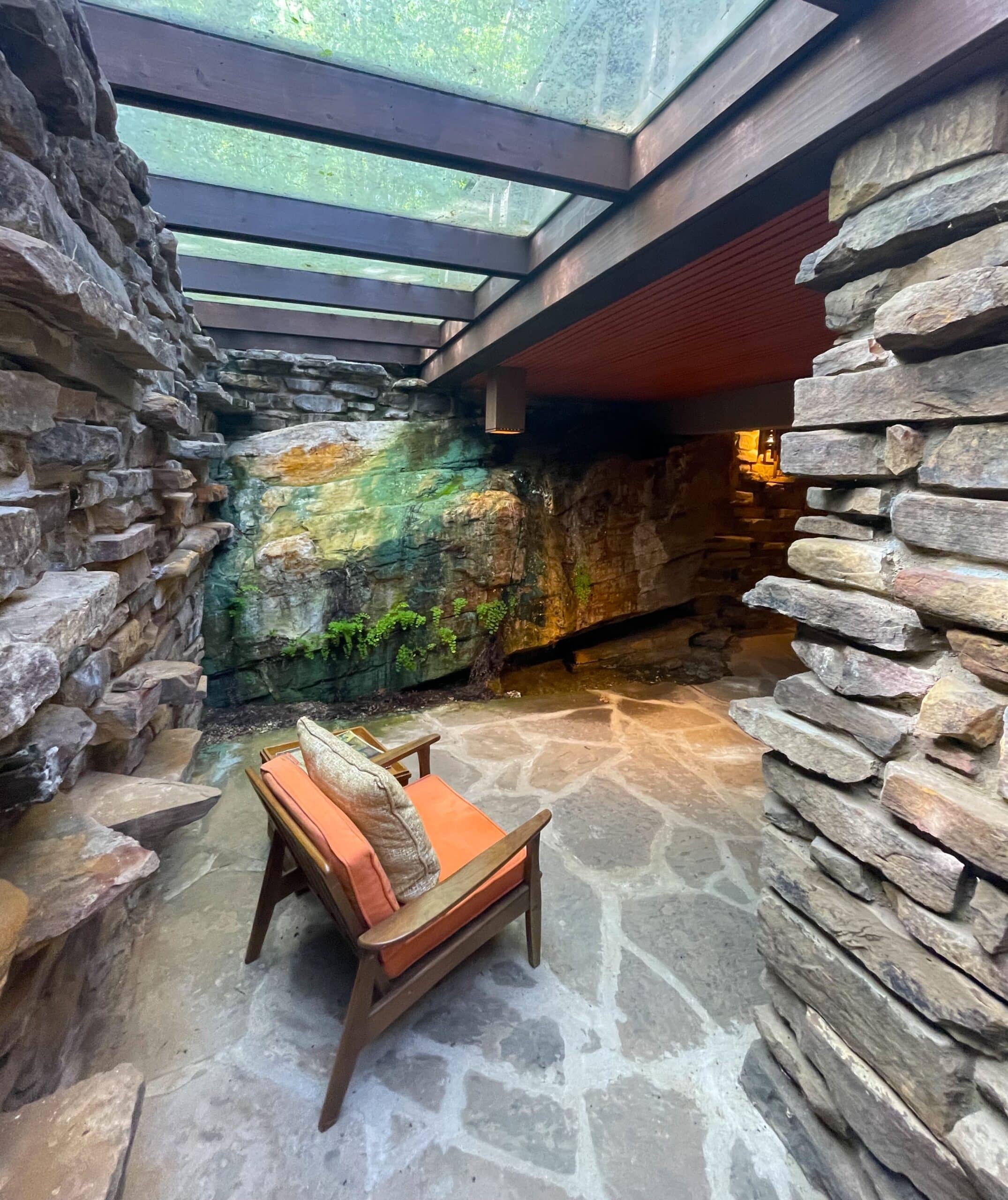
Upstairs, the home transforms into a treehouse with a low central stone hearth. Jones selected a lot adjacent to a wooded area and situated the house with the main façade facing west. A balcony and windows offer sweeping views in every direction and let the sun light all the main interior spaces throughout the day, a theme repeated in many other Jones structures.
“You can pretty much find everything he did subsequently in this house in some form,” Herman said.
The Jones House was listed on the National Register of Historic Places in 2000 and is documented in the Historic American Buildings Survey, winning the Charles E. Peterson Prize in 2010.
Richard and Alma Brothers House, Fayetteville, 1957

“Fay liked to approach every project fresh, with a renewed, introspective quality based on the knowledge of how materials go together. There’s an honesty to the craft,” said David McKee, principal of McKee Architects and Jones’ apprentice and associate for 16 years.
Early in his career, Jones began designing homes for University of Arkansas faculty, including music professors Richard and Alma Brothers. The Brothers’ budget was conservative, leading to a model based on Wright’s Usonian homes and unique in Jones’ work. Usonian homes center on three primary areas—a living space, open kitchen and dining, and small bedrooms and baths. The sophisticated yet simple floor plan for this home is defined by openness, flow and connectedness with the exterior.
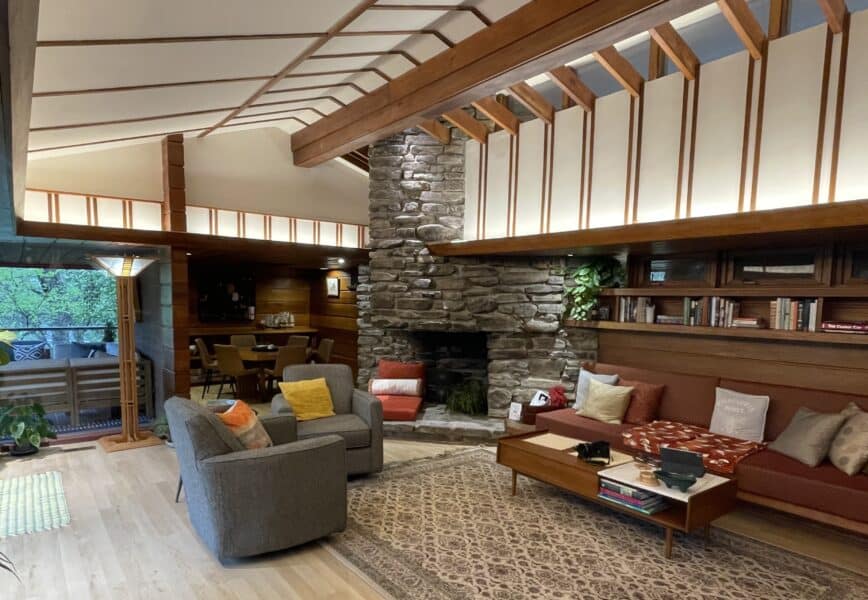
Some elements reappear in later Jones designs—the ridge beam pulled off-center and floor-to-ceiling windows and glass doors that frame expansive views. Panes of glass precisely butted together at the corners let the eye take in the nearby woodland uninterrupted by structural elements. The rectangular hip and gable roof follows the strike of the ridgeline and features a jackknife edge with dentil modeling that’s repeated indoors in the cupboards, countertops and built-in seating that Jones designed.
McKee remains passionate about preserving Jones’ legacy and, in 2021, became the force behind restoring the Brothers House. The city of Fayetteville recently recognized McKee Properties with the 2024 Historic Restoration Award for their meticulous work. Two University of Arkansas students documented the home for the Historic American Buildings Survey in 2022, winning an honorable mention for the Leicester B. Holland Prize. The Brothers House is now open to short-term residents eager to experience a mid-century masterpiece.
Faubus House, Huntsville, 1967
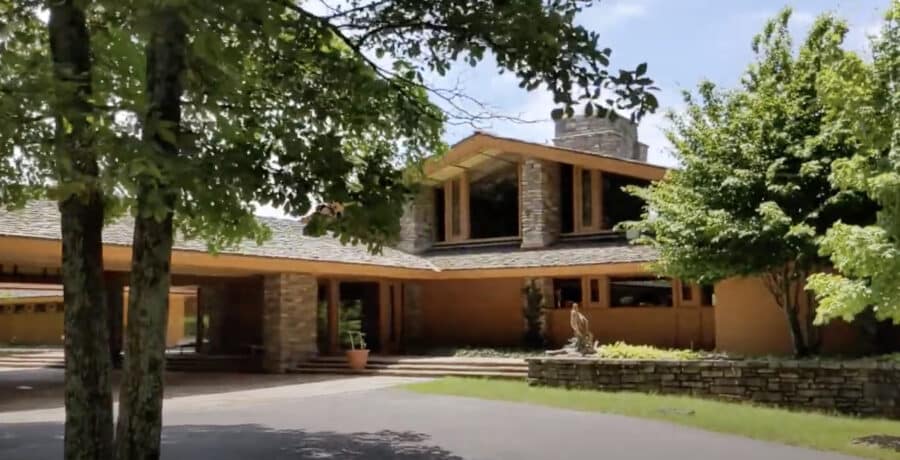
“He was all about bringing the indoors out and the outdoors in,” said Ronna Precure, steward of Faubus House. “We have quite an extensive area of terraces. When you add that square footage, designed for entertaining and living, we’re over 13,000 square feet.”
The home’s interior spreads out more than 7,356 square feet, making it the largest residence Jones designed. But that’s fitting for a house intended as much for lavish entertaining during Orval Faubus’ unsuccessful run for the Senate as it was for private living—which also explains why the home features four ovens but only three bedrooms.
Both famous and infamous, Faubus served as Arkansas governor from 1955 to 1967, longer than any other person. Although progressive in some ways, he’s remembered for attempting to block the desegregation of Little Rock’s Central High School in 1957, forcing President Dwight D. Eisenhower to send federal troops to enforce the U.S. Supreme Court’s ruling.
This home built for him a decade later extends 214 feet along a bluff, with landscape clearly inspiring form. The home’s most iconic element—a 30-foot cantilevered catwalk—offers the drama of a stroll out over the rocky cliff and into the treetops. Vertical elements like stone columns, apertures and panels draw the eye upward to the three massive chimney stacks perched on the roof.
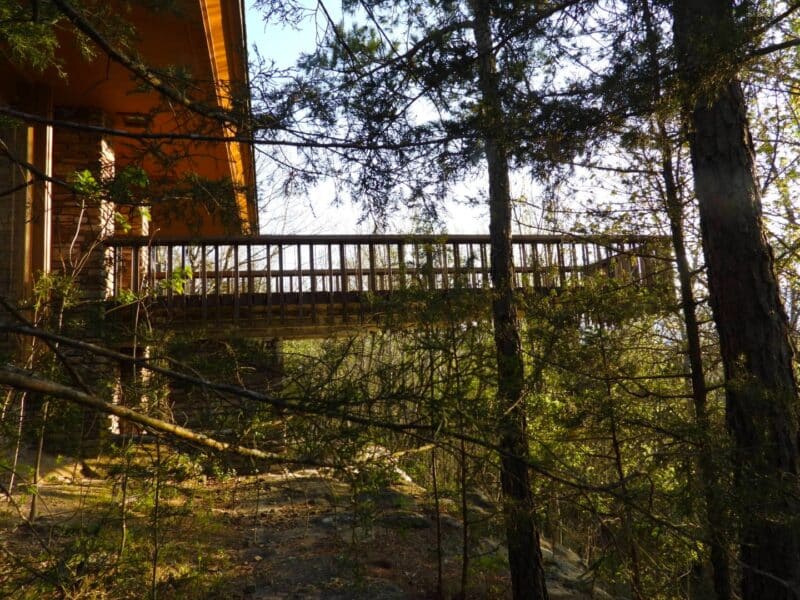
The current owner, Jonathan Formanek, purchased the home in 1995 and intends for it to remain open to visitors. In recognition of Jones’ architecture, Faubus House was listed on the National Register of Historic Places in 2019.
Thorncrown Chapel, Eureka Springs, 1980
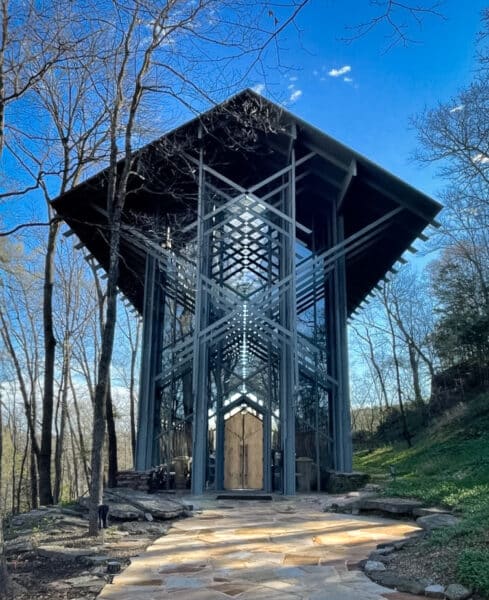
“A Thin Place” is how C. Page Highfill, AIA Emeritus, described Thorncrown—meaning a place where the distance between heaven and earth collapses. That may be exactly what California schoolteacher Jim Reed envisioned when he asked Jones to design a little glass chapel on his wooded property to inspire visitors.
Although they originally chose an exposed location near the highway, Reed found a natural stone altar hidden in the trees, with rock formations to the right and spectacular woods on the left. Here, like nowhere else, Jones could realize the principle of unity between building and site. “In the end, you hope it will look like man and nature planned the building together to the mutual benefit of both,” Jones said.
The lack of a road meant no structural element could be larger than what two men could carry, so pressure-treated Southern pine 2x4s, 2x6s and 2x12s served as the primary materials. Where these humble pieces of lumber intersect, they form the chapel’s most striking element—hundreds of diamond-shaped apertures that radiate pure light.
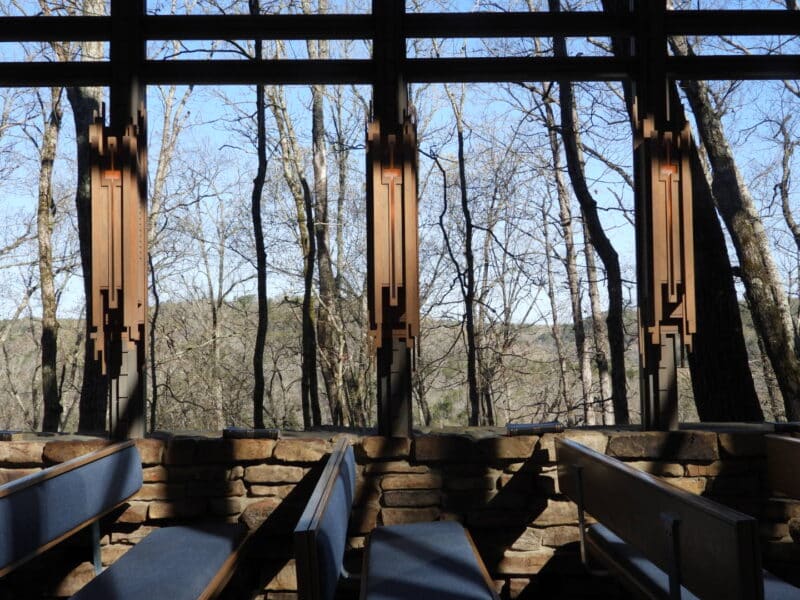
Inspired by Paris’ light-filled Sainte-Chapelle, the chapel rises 48 feet toward the skies with more than 6,000 square feet of glass and 425 windows. Jones referred to the style of Thorncrown as “Ozark Gothic” and himself as a “cathedral builder born 500 years too late.” Although Jones and Reed doubted that anyone would visit Thorncrown, 7 million people have made the pilgrimage to date.
The AIA recognized Jones’ masterwork with a National Honor Award almost as soon as it was built and named it fourth on their list of top structures of the 20th century. Thorncrown Chapel was listed on the National Register of Historic Places in 2000.
Mildred B. Cooper Memorial Chapel, Bella Vista, 1989
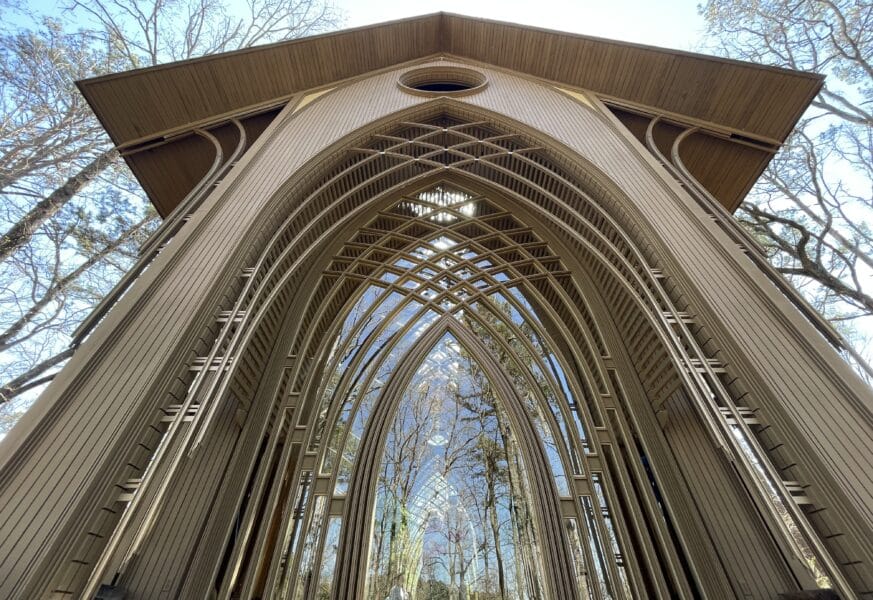
“I do not pretend to understand the creative process—but, sometimes, in that time of searching, by concentrating with great intensity on some obscure part or small detail, a vast landscape of order and continuity can be illuminated.” — From the writings of Fay Jones shared at the Jones House.
The Cooper family asked Jones, working with partner Maurice Jennings, to design a chapel to honor Mildred Cooper and her deep spiritual beliefs and great love and respect for nature. In the Cooper Chapel, Jones’ “small details” repeat themselves endlessly, with each part relating to the whole—from the door handles to the heavy wooden doors to the interwoven lathes emanating from them and pointing to the circular “rose” window above. Trading the lumber of Thorncrown for the strength of 31 tons of slender steel sheathed in redwood lets 15 pointed arches traverse the structure, creating a harmonious whole that rises 50 feet.
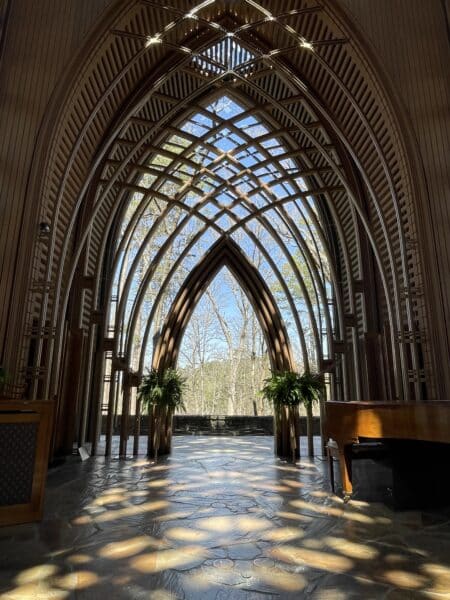
The chapel stands on a wooded hillside overlooking Lake Norwood. The 4,460 square feet of glass offers clear views of the outdoors and leaves visitors wondering if the chapel is open to the air. The similarities to Thorncrown are undeniable, and Jones once again produced an “instrument nature can play,” as he described it in “The Generative Idea.”
The Cooper Memorial Chapel was named to the Arkansas Registry of Scenic Resources in 1993.











